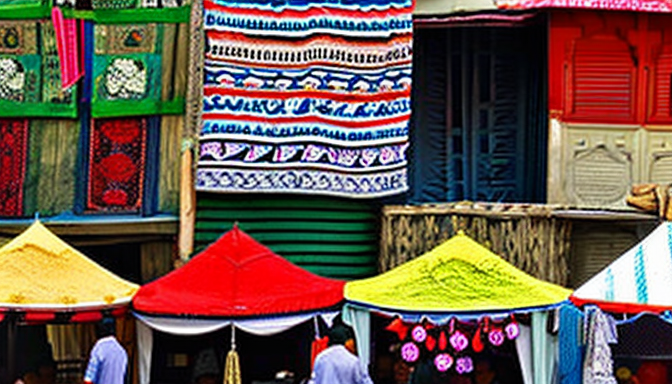Karachi, a bustling metropolis, wears its colonial history like a badge of honor. The city’s streets are a canvas painted with the strokes of time, revealing stories of British influence that still resonate today. Imagine walking through a city where the past and present collide, where colonial architecture stands tall amidst modern skyscrapers. It’s like a time capsule, isn’t it?
Let’s take a stroll down memory lane. The British arrived in the 19th century, and their presence transformed Karachi into a key trading port. They brought with them not just their goods, but their architectural styles too. Buildings like the iconic Frere Hall and the stunning Mohatta Palace showcase a blend of Gothic, Indo-Saracenic, and Victorian styles. These structures tell tales of a time when Karachi was a melting pot of cultures, a hub for trade and ideas.
But it wasn’t just the buildings that changed. The policies implemented during the colonial era shaped the city’s urban landscape. Roads were constructed, parks were designed, and the city began to expand. This urban planning was not just functional; it was a reflection of the British vision for Karachi. It’s fascinating to think about how these decisions continue to affect the city today.
In essence, Karachi’s colonial past is more than just history; it’s a living legacy. The city’s architecture and urban policies are reminders of a complex interplay between cultures. They invite us to explore, to reflect, and to appreciate the rich tapestry that is Karachi. So, next time you wander through its streets, remember the stories etched in every brick and pathway.
The Architectural Legacy of Colonialism
Karachi’s skyline tells a story. A story of colonial ambition and architectural innovation. When the British arrived, they didn’t just bring their governance; they brought their style, their vision, and their buildings. Walking through the city, you can see this blend of old and new everywhere. From the grandiose structures of the British Raj to the bustling markets that have sprung up around them, each corner reflects a piece of history.
Imagine strolling down the streets of Saddar. You’ll find buildings like the Frere Hall and the Empress Market. These weren’t just constructed for function; they were designed to impress. The intricate facades and towering arches are a reminder of a time when architecture was about more than just shelter. It was about status and identity.
The impact of colonial policies can’t be ignored either. The British laid out the city in a way that favored their needs, influencing everything from transportation to trade. This has led to a unique urban landscape, where colonial structures coexist with modern developments. It’s a bit like a patchwork quilt, each piece telling its own story, yet stitched together to form a whole that is distinctly Karachi.
In many ways, Karachi’s architectural legacy is a reminder of its past. It invites us to reflect on how history shapes our environments. So next time you walk through the city, take a moment. Look up. Appreciate the blend of styles and the stories they tell. After all, architecture is not just about buildings; it’s about the people and the cultures that create them.

Cultural Syncretism in Karachi
Karachi, a city that never sleeps, is a vibrant melting pot of cultures. Its streets pulse with the rhythms of tradition and modernity, a blend shaped by its colonial past. The British era left an indelible mark on the city, influencing everything from its architecture to its societal norms. Have you ever walked through Saddar and marveled at the grand colonial buildings? They stand as silent witnesses to a time when Karachi was a bustling port city under British rule.
This fusion of cultures is not just visible in the architecture. It’s embedded in the everyday lives of Karachiites. From food to festivals, the city showcases a rich tapestry of influences. For instance, the delicious Karachi biryani has roots that trace back to Mughal kitchens, yet it has been infused with spices and techniques from various cultures. It’s like a culinary symphony, where every note tells a story.
Moreover, Karachi’s festivals are a perfect example of this cultural syncretism. Events like Eid and Christmas are celebrated with equal fervor, reflecting the city’s pluralistic ethos. It’s not uncommon to see a Hindu family inviting their Muslim neighbors over for Diwali, or a Christian household hosting a feast during Ramadan. This blending of traditions creates a sense of community that is both unique and heartwarming.
In essence, Karachi is a canvas painted with the colors of its diverse heritage. The city’s ability to embrace different cultures while retaining its own identity is a testament to its resilience. Just like a well-worn book, each page tells a story, and Karachi’s story is one of unity in diversity.
Frequently Asked Questions
- How has colonialism influenced Karachi’s architecture?
Colonialism has left a remarkable imprint on Karachi’s skyline. The city showcases a blend of architectural styles, from Gothic to Indo-Saracenic, which narrate stories of its colonial past. Walking through the streets, you can see how these styles have fused with local influences, creating a unique visual narrative.
- What is cultural syncretism, and how is it evident in Karachi?
Cultural syncretism refers to the blending of different cultural traditions. In Karachi, this is vividly seen in its festivals, cuisine, and everyday life. The city’s diverse population has contributed to a rich tapestry of customs, where you can experience a melange of sounds, flavors, and practices that celebrate both local and global influences.
- Why is Karachi considered a melting pot of cultures?
Karachi is often termed a melting pot due to its history of migration and trade. People from various ethnic backgrounds have settled here, bringing their customs and traditions. This fusion has created a vibrant cultural scene, making the city an exciting place where different cultures coexist and thrive together.